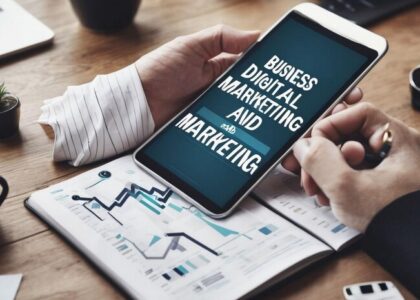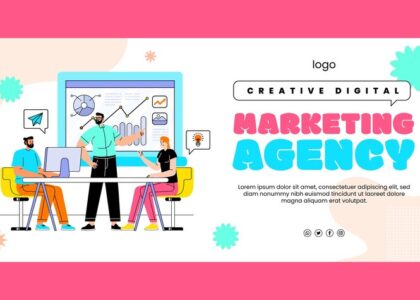
Introduction
Table of Contents
In the age of rapid technological advancement, the ability to disrupt with technology has become crucial for staying ahead of the competition. Whether you’re an entrepreneur looking to innovate or a business leader aiming to transform your industry, understanding how to leverage technology to drive disruption is key. This comprehensive guide explores seven powerful strategies that can help you master the art of technological disruption, offering practical advice and real-world examples to inspire and guide you.
1. Embracing Emerging Technologies
To disrupt with technology, it’s essential to stay abreast of emerging technologies. Technologies such as:
- Artificial Intelligence (AI): AI enhances decision-making and automates processes. For example, IBM’s Watson uses AI to provide data-driven insights in healthcare.
- Blockchain: Originally developed for cryptocurrency, blockchain now offers secure, transparent transaction methods. Companies like Ethereum are pioneering its use for smart contracts and decentralized applications.
- Augmented Reality (AR) and Virtual Reality (VR): AR and VR are transforming sectors like retail and real estate by providing immersive experiences. IKEA’s AR app lets customers visualize furniture in their homes before purchasing.
External Link: Click Here For More Information
These technologies not only offer new capabilities but also create opportunities for market disruption. Implementing them can give you a competitive edge and drive significant change within your industry.
2. Cultivating a Culture of Innovation

Disrupt with technology effectively by fostering a culture of innovation within your organization. This involves:
- Encouraging Creative Thinking: Google’s “20% Time” allows employees to spend 20% of their workweek on personal projects. This policy has led to the creation of products like Gmail and AdSense.
- Creating Innovation Labs: Many companies, such as Microsoft and IBM, have established innovation labs where teams can experiment with new ideas and technologies without traditional constraints.
- Rewarding Risk-Taking: Recognize and reward employees who take calculated risks and come up with innovative solutions. This can motivate others to think creatively and push the boundaries.
External Link: Harvard Business Review – Cultivating Innovation
By nurturing an environment that supports experimentation and creativity, you can drive continuous improvement and technological Disrupt with Technology.
3. Leveraging Data for Insights
More About This Topic Cllick Here
Data is a crucial asset when looking to Disrupt with Technology. By leveraging data analytics, you can:
- Understand Customer Behavior: Use tools like Google Analytics to track user interactions and preferences. This information helps tailor products and services to meet customer needs more effectively.
- Optimize Operations: Implement data-driven decision-making to streamline operations. For instance, Amazon uses data to optimize its supply chain and improve delivery times.
- Predict Trends: Predictive analytics can identify emerging trends and opportunities. For example, Netflix uses data to recommend content based on viewing history and preferences.
External Link: Forbes – The Importance of Big Data
Harnessing the power of data allows you to make informed decisions, refine strategies, and anticipate market changes, which is essential for driving technological disruption.
4. Implementing Agile Methodologies
Agile methodologies are key to disrupting with technology by providing a framework for rapid and flexible development. Key principles include:
- Iterative Development: Agile emphasizes incremental progress through short development cycles, allowing for regular feedback and adjustments. This approach helps address issues early and adapt to changes quickly.
- Cross-Functional Teams: Agile encourages collaboration across different departments, ensuring that all perspectives are considered. This can lead to more innovative solutions and faster problem-solving.
- Customer Feedback: Agile processes prioritize customer feedback, ensuring that the final product meets user needs and expectations.
External Link: Scrum.org – Agile Methodologies
By adopting agile practices, you can enhance project flexibility, improve product quality, and accelerate your ability to respond to technological changes and market demands.
5. Enhancing Customer Experience with Disrupt with Technology
To disrupt with technology, focusing on customer experience is vital. Strategies to consider include:
- Personalization: Utilize technologies like AI to offer personalized recommendations and content. For instance, Spotify uses AI to create custom playlists based on listening habits.
- Chatbots: Implement chatbots to provide instant customer support and answer frequently asked questions. This improves response times and enhances customer satisfaction.
- Omnichannel Experience: Ensure a seamless experience across various platforms, such as mobile apps, websites, and in-store interactions. Companies like Starbucks provide a unified experience through their mobile app and loyalty program.
External Link: Gartner – Enhancing Customer Experience
Improving customer experience through technology not only boosts satisfaction but also fosters loyalty and drives growth.
6. Investing in Cybersecurity
As you disrupt with technology, safeguarding your digital assets is crucial. Key cybersecurity practices include:
- Multi-Factor Authentication (MFA): MFA adds an extra layer of security by requiring users to provide multiple forms of verification before accessing accounts.
- Encryption: Encrypt sensitive data to protect it from unauthorized access. This is particularly important for financial and personal information.
- Regular Security Audits: Conduct regular security assessments to identify and address vulnerabilities. This proactive approach helps mitigate risks and ensure compliance with security standards.
External Link: Cybersecurity & Infrastructure Security Agency
Investing in robust cybersecurity measures is essential for protecting your technology investments and maintaining trust with stakeholders.
7. Exploring Strategic Partnerships
Strategic partnerships can amplify your ability to disrupt with technology by leveraging external expertise and resources. Consider:

- Collaborating with Tech Startups: Partnering with innovative startups can provide access to cutting-edge technologies and fresh perspectives. For example, IBM’s partnerships with blockchain startups have accelerated blockchain adoption.
- Engaging with Research Institutions: Collaborate with universities and research institutions to gain insights and access to new Disrupt with Technology . Partnerships with institutions like MIT can drive technological advancements and innovation.
- Joining Industry Networks: Participate in industry networks and consortiums to stay informed about trends and collaborate on technology initiatives.
External Link: TechCrunch – Strategic Partnerships
Strategic partnerships can enhance your Disrupt with Technology capabilities and drive innovation, positioning you at the forefront of industry developments.
FAQ Section
Q1: What are some examples of disruptive technologies?
A1: Examples include AI, blockchain, AR/VR, and IoT. These technologies have transformed various industries by introducing new ways of doing things and creating new business opportunities.
Q2: How can small businesses disrupt with technology?
A2: Small businesses can disrupt with technology by leveraging affordable tech solutions, such as cloud services and social media marketing. Adopting innovative technologies and focusing on niche markets can also help small businesses stand out.
Q3: What role does innovation play in technological disruption?
A3: Innovation is at the core of technological disruption. It involves developing new ideas, processes, or products that challenge the status quo and create significant improvements or new opportunities.
Q4: How can companies measure the success of their technological disruption efforts?
A4: Success can be measured through various metrics, including increased market share, revenue growth, customer satisfaction, and the impact on industry standards. Tracking these indicators helps evaluate the effectiveness of your disruption strategies.
Q5: What are the risks associated with technological disruption?
A5: Risks include potential cybersecurity threats, implementation challenges, and resistance to change. Addressing these risks through robust planning, security measures, and change management strategies is essential for successful disruption.
Conclusion
Mastering the art of disrupting with technology requires a strategic approach, focusing on emerging technologies, fostering innovation, leveraging data, and ensuring cybersecurity. By implementing these seven powerful strategies, you can drive significant change and maintain a competitive edge in today’s technology-driven landscape.
For more insights and updates on technological disruption, explore the following resources:
- Wired – Technology and Innovation
- TechCrunch – Latest Technology News
- The Verge – Technology and Culture
Embrace these strategies to harness the transformative power of technology and lead your industry into the future.
This extended blog post provides a deeper dive into each strategy, offering additional examples and practical advice for disrupting with technology. Feel free to tailor the content further based on your audience’s needs and preferences!






